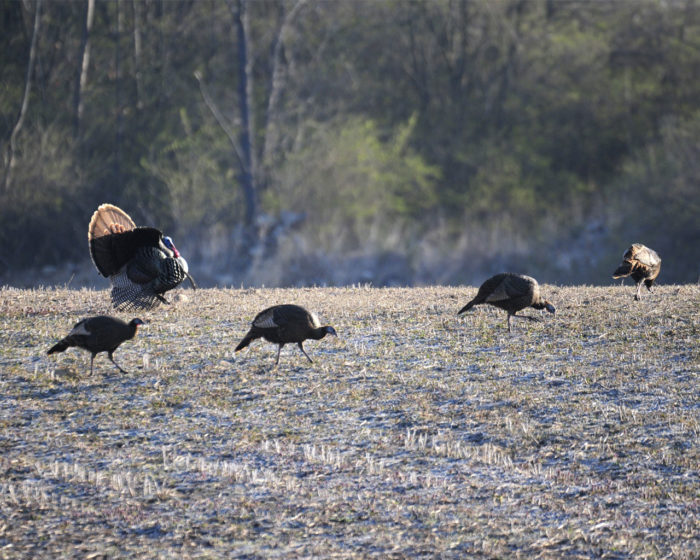SOURCE: News release from Indiana Department of Natural Resources
The DNR Division of Fish & Wildlife is looking for volunteers to count wild turkeys and their offspring from July 1 to Aug. 31.
Each summer, wildlife biologists and volunteers conduct brood surveys, counting the number of young wild turkeys observed with turkey hens to estimate how many young turkeys live through the summer. Summer brood survival is one of the primary factors influencing wild turkey population trends in various regions of the state and informs wild turkey management.
“Turkey biologists across the country are increasing efforts to better assess summer brood production and habitat changes,” said DNR turkey biologist Steve Backs. “This will help us determine what is causing declines and ways to possibly increase turkey numbers.”
Turkey biologists can’t do it by themselves. They need help from volunteers to get an accurate count of turkey broods in the state.
The goal this summer is to collect 3,000 brood observation reports from citizens across the state, with at least 25 brood observations in each county.
To help, please register as a 2019 participant at on.IN.gov/turkeybrood. Instructions for the survey and an illustrative guide on how to report observations of wild turkey broods and hens is provided on the website. The results of the previous summers’ brood survey are also available.
Wild turkeys were reintroduced to Indiana beginning in the mid-1950s until the early 2000s. Today they are found across the state, but declines in brood production over the last decade have reduced the number of wild turkeys observed in some regions.
“After wild turkey restoration efforts, many states watched their turkey populations peak and then settle into lower levels during the last decade,” Backs said. “Some states observed greater declines than others in their turkey populations. But universally, all states have observed declines in annual production or brood survival during the summer months.”
To learn more about wild turkey biology and management, visit on.IN.gov/turkey.
